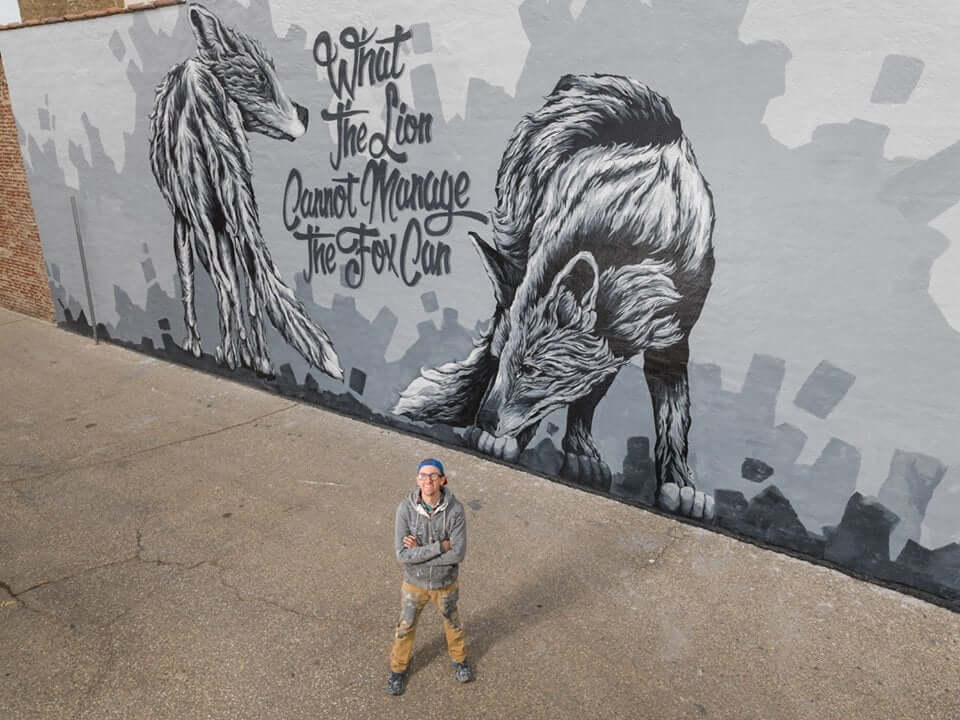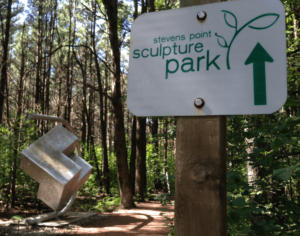
What makes a place special? Inviting, inspiring, and influential? How can a community use art to create spaces that are all of these things and more?
The University of Wisconsin–Madison’s Creative Placemaking Summer Workshop (July 23-27) helps participants find answers to these questions through arts-based community development. Three UW–Madison units—Continuing Studies, the Division of the Arts, and the Bolz Center for Arts Administration—have teamed up to offer this unique learning opportunity, which features visits to a variety of creative placemaking hotspots.
Whether viewing murals, touring makerspaces, or talking to people who’ve used tools like these to bring about change, participants will learn how creative placemaking can promote health and make a community a desirable place to live. Experts who have helmed creative placemaking initiatives will facilitate this discovery. One is Sherry Wagner-Henry, who directs both the Bolz Center and the Campus Arts and Business Initiatives. She leads the workshop, bringing in additional experts such as Madison-based collaborative design consultant Gwen Drury and Todd Johnson of the UW Extension Community Vitality & Placemaking team.

Art’s power to unite
Wagner-Henry says arts and culture shape the identity of a community and help its members develop a sense of place. As a result, they’re integral parts of the creative placemaking process.
“The process starts by considering the assets each community has, whether that’s waterfront property, historical buildings and sites, green spaces, public art, outdoor seating, or public transportation. These all create a specific sense of identity that make or keep a place special,” she explains.
Wagner-Henry adds that cultural considerations help placemakers tailor projects to specific communities and bring people together when they experience a placemaking project such as an art installation.
“The culture of every community is different and unique, with contributions from our indigenous peoples, early settlers, and more recent immigrant populations, but all places have one asset in common,” she says. “That asset is artists.”
Creative placemaking in action
Wagner-Henry hopes the Creative Placemaking Summer Workshop attracts a wide variety of participants who can learn from one another as well as the instructors. She would like to see city planners, economic development specialists, landscape architects, entrepreneurs, and policymakers benefit from this experience, as well as artists, leaders of nonprofit organizations, and staff from arts and cultural organizations.

“The hope is to create both a community of learning and a networked community of practice that lives well beyond this weeklong intensive,” she says.
In addition to exploring creative placemaking principles through online materials and discussions, participants will stage a mock design charrette in class. A full design charrette is a face-to-face planning session where community members, designers, and others interested in a creative placemaking project work together to craft its vision. It’s also an opportunity for people who might experience the final product to share feedback with its designers early on. In the classroom version, participants will work through all of the key components and questions, thinking about how these elements might be used in their home communities.
To understand how all of this really works, it’s important to see it in person. That’s why field trips are another important facet of the workshop. Participants will visit Stevens Point to learn from CREATE Portage County, an organization that runs a creative placemaking incubator and an IDEA Center with a design lab and coworking space. CREATE has coordinated projects ranging from downtown murals to events like Sculpture Quest, a geocache adventure that involves searching for small iron sculptures hidden in natural areas across Portage County.
Participants will also connect with Downtown Madison, an advocacy group involved in initiatives such as Downtown Doors, a new creative placemaking project in which local artists customized the doors of 25 buildings between the Capitol and the UW–Madison campus. By adding original artwork to these secondary entranceways, the artists reimagined an architectural detail that’s often overlooked and created an outdoor gallery for all to enjoy.
From the country to the city
Through these experiences, participants will enhance their understanding of creative placemaking principles and criteria for assessing placemaking projects. They’ll also learn best practices for developing the kinds of partnerships that lead to success in this line of work.

Kate Hewson, assistant director for academic programs in the Division of the Arts, says this is likely the only creative placemaking training that addresses urban and rural communities alike.
She also praises the workshop’s collaborative nature, which can help attendees succeed in the long run.
“Participants get the chance to discuss projects from their home communities,” she says, “and they gain valuable contacts that can continue to support them in their work after the workshop ends.”
For more information about the Creative Placemaking Summer Workshop, contact Jessica Courtier, jessica.courtier@wisc.edu. To register, visit the registration portal.
Photos of Alexander Landerman by John Hartman.